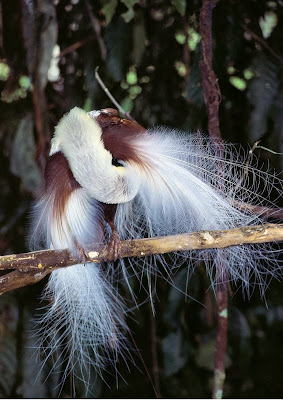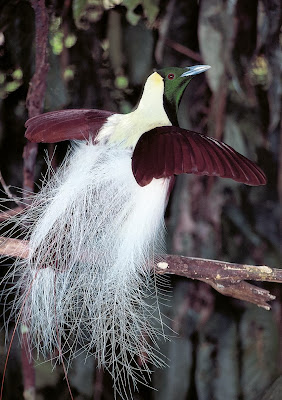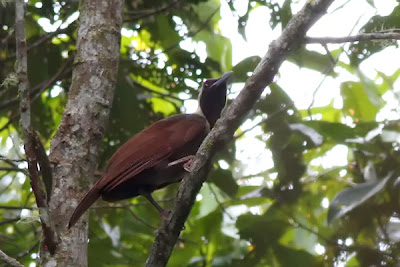 |
| Paraddisaea Guilielmi on Display |
Paradisaea Guilielmi:
The Emperor Bird of paradise also known as Emperor of Germany's Bird of paradise. Its scientific name
is Paradisaea guilielmi.
Paradisaea is a Latin word wich means paradise, Guilielmi named Wilhelm, which
memorializes Wilhelm-II, the last Emperor of Germany and King of Prussia, Emperor
bird of paradise was the last bird exposed on January 1888, by Carl Hunstein,
While he was on his journey, he also found the Blue bird of paradise. Both
species, along the Red bird of paradise are the only Paradise
birds, which
stimulate upside down display. |
| Paraddisaea Guilielmi on Display |
Behaviour:
Adult male is
large, approximately 33 cm in length (excluding tail feathers) and adult
female is about 31 cm in length. They
are sexually dimorphic. Male has extensive dark emerald green facial mask and upper breast,
white delightful flank plumes with yellow base and two central wire tail
quills, bluish-grey beak and purplish brown legs. Adult female has
similar appearance, but has brown plumage over all, small in guage and
has no decorative plumes. This species is Polygynous. Males use
traditional tree show perches in lekking system, which can be across
different attached trees. Adult males return to each other and take over steady
displays, jump on branches, turnup flank feathers and hang upside down,
broadening flank plumes to form white dist while bending side to side. Emperor
bird of paradise feeds on mostly fruits, figs and some insects.
 |
| Female Emperor Bird of Paradise |
Habitat & Breeding:
Emperor bird of paradise is
endemic to Papua New Guinea. It is spread out in hill and lower mountain
forests of Peninsula and also in gardens. Its lowest range is 450 to 1500
meters, mostly 670 to 1350 meters. The breeding season of Emperor bird of
paradise is very short between September to December; females build and attend
nests unaccompanied, hatching, nestling and growth periods not yet in knowledge.
 |
| Emperor Bird of Paradise Downside Show |
No comments:
Post a Comment